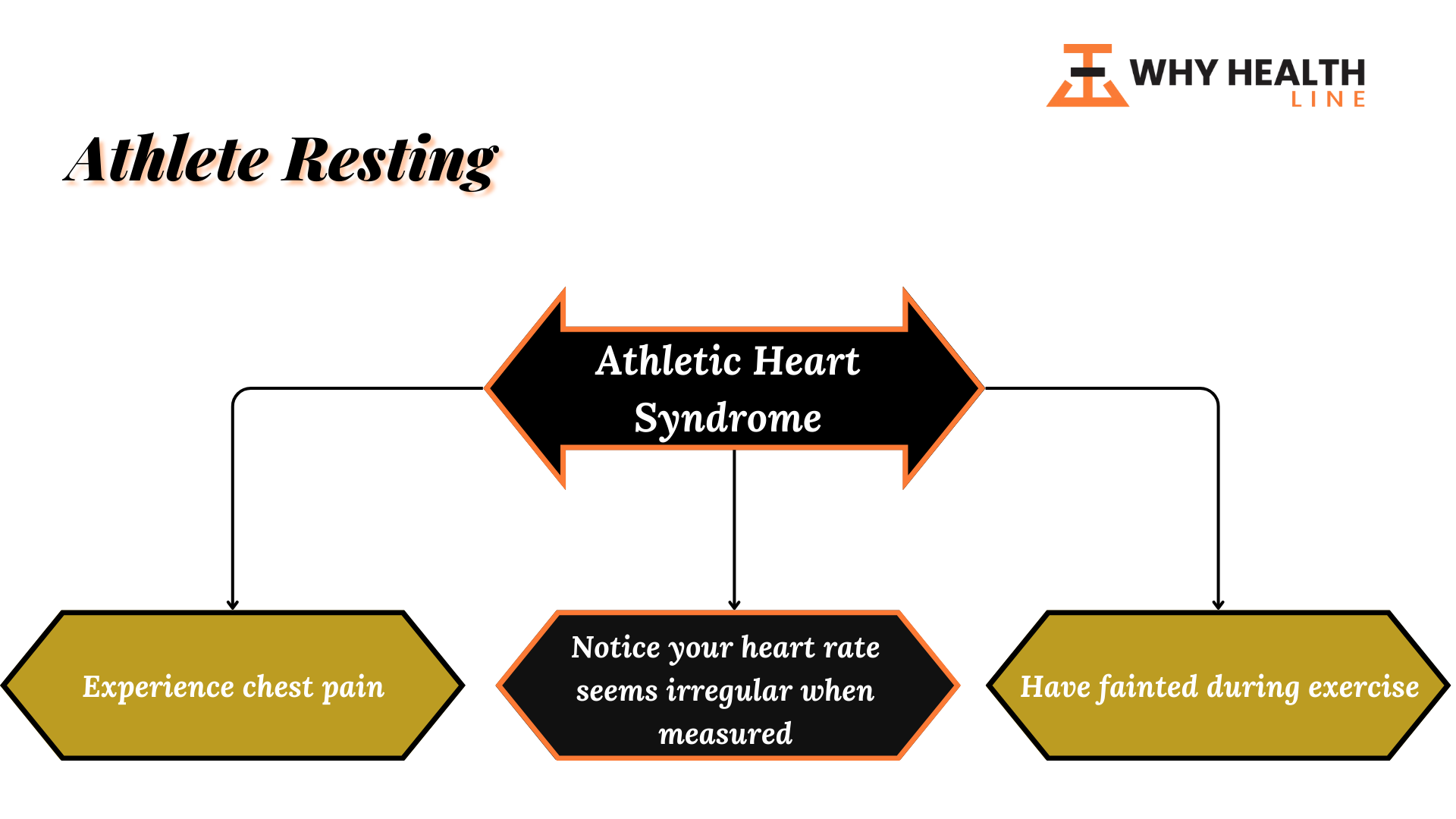
Overview
The resting heart rate of a young, healthy athlete, may range from 30 to 40 bpm and is usually considered low compared to the resting heart rate of the general population.
That’s probably because exercises make the heart muscle stronger. With each heartbeat, the athlete’s heart pumps more blood, and their muscles receive more oxygen.
But during exercise, an athlete’s heart rate may increase to 180 to 200 bpm. However, everyone has a different resting heart rate.
Common factors that might have an impact on it generally include:
- Age.
- Fitness level.
- Amount of physical activity.
- Air condition (on hot or humid days, heart rate may increase).
- Emotion (stress, anxiety, and excitement can increase heart rate).
- Medications (beta blockers can slow heart rate, while some thyroid medications can increase it).
Normal Resting Heart Rate
Adults typically have resting heart rates between 60 and 100 bpm and people who are physically fit can have resting heart rates under 60.
Athletes with resting heart rates under 40 include marathon runners and professional cyclists.
Increased cardiovascular risk and all-cause mortality risk can be indicated by an elevated resting heart rate of 80 bpm. The risk becomes more noticeable when the resting heart rate exceeds 90 bpm.
It also differs depending on gender. Because women’s hearts are typically smaller and have less hemoglobin and blood volume, the heart must beat more frequently to supply the body’s tissues with nutrients.
The typical resting heart rate of an individual also varies throughout their lifetime, becoming substantially slower as they get older. Any medications you take may also impact your resting heart rate.
For instance, calcium channel blockers and beta-blockers can drop your resting heart rate below 60, whereas asthma, depression, and attention deficit disorder drugs may increase it.
An athlete’s resting heart rate is considered too low when it shows symptoms like dizziness, exhaustion, or weakness.
These signs could also be a sign of another issue. That’s why it is important to consult a doctor if you notice a substantially slow heartbeat.
Athletic Heart Syndrome
Athletic Heart Syndrome is a condition in which the heart adapts to increased demands of regular exercise or athletic training.
It is not considered a disease, but rather a benign adaptation of the heart to exercise. People who exercise for more than an hour each day are more likely to experience it.
Though this condition is usually considered benign and does not require treatment, still, it can sometimes be difficult to distinguish it from other more serious conditions, such as hypertrophic cardiomyopathy or arrhythmias, which may require medical intervention.
An athletic heart syndrome rarely causes health issues and does not usually require a diagnosis. However, if you experience any of the following issues, it is better to inform your doctor:
- Experience chest pain
- Notice your heart rate seems irregular when measured
- Have fainted during exercise
A cardiac condition might cause athletes to pass out occasionally. But, athletic heart syndrome can also occur due to an underlying problem such as congenital heart disease.
According to a recent study, athletes with low resting heart rates may experience abnormal cardiac rhythms later in life.
Moreover, exceeding your estimated maximum heart rate for extended periods could harm your health. Therefore, you should stop exercising immediately if you feel dizzy, nauseous, or sick.
How to Determine Your Ideal Resting Heart Rate?
Athletes who have received proper training may have a resting heart rate of 30 to 40 bpm. However, everyone’s heart rate varies.
Although a lower resting heart rate may indicate that you are fitter, there is no “optimal” resting heart rate.
Your resting heart rate can be determined at home. When you wake up in the morning, check your pulse to determine your resting heart rate.
Count the beats for a full minute as you gently press the tips of your index and middle fingers on the lateral part of your wrist, right below the thumb side of your hand (or count for 30 seconds and multiply by 2, or count for 10 seconds and multiply by 6).
How to Determine Your Ideal Exercising Heart Rate?
Determining your ideal exercising heart rate involves calculating your target heart rate zone, which is the range of heartbeats per minute (bpm) that you should aim for during exercise.
Here are the steps to determine your ideal exercising heart rate:
- Calculate your Maximum Heart Rate (HR-max): Subtract your age from 220 to get an estimate of your maximum heart rate. For example, if you are 30 years old, your HR-max would be 190 bpm (220 – 30 = 190).
- Determine your Resting Heart Rate (HR-rest): Take your pulse when you first wake up in the morning, before you get out of bed. Count your pulse for 60 seconds. This is your resting heart rate.
- Calculate your Heart Rate Reserve (HRR): Subtract your HR rest from your HR max. This is your HRR.
- Determine your Target Heart Rate (THR) Range: Multiply your HRR by the percentage of the intensity you want to work at, and then add your HR rest to this number.
FAQs
What is a Good Heart Rate For an Athlete?
Athletes with a high level of fitness can have a resting heart rate below 60. However, a resting heart rate of 50 beats per minute (bpm) is considered healthy for an athlete only if he does not feel dizzy or ill.
Moreover, a resting heart rate of 50 to 59 bpm is a good indicator that an athlete’s heart is functioning quite well.
Can Athletes Have a Resting Heart Rate of 40?
A well-trained, young, and healthy athlete can have a normal resting heart rate closer to 40 beats per minute and is considered low when compared to the general population.
That’s probably because exercise strengthens the heart muscle and allows it to pump a relatively greater amount of blood with each heartbeat.
Does Resting Heart Rate Correlate with Fitness?
Resting heart rate is a measure of overall fitness and heart health. For most adults, a healthy heart rate generally ranges between 60 to 100 bpm. Whereas, athletes often have a lower resting heart rate than others.
A low heart rate means that your heart requires fewer beats to pump the same amount of blood throughout your body and it generally indicates a higher level of cardiovascular fitness.
